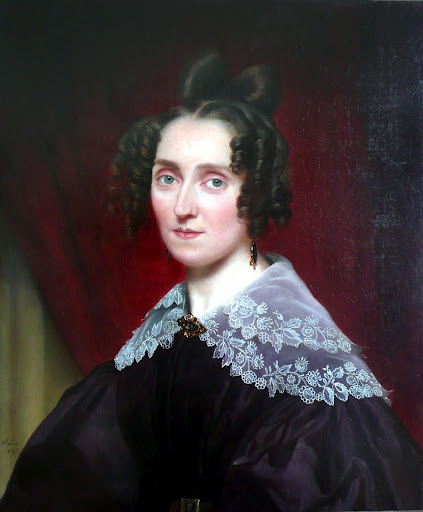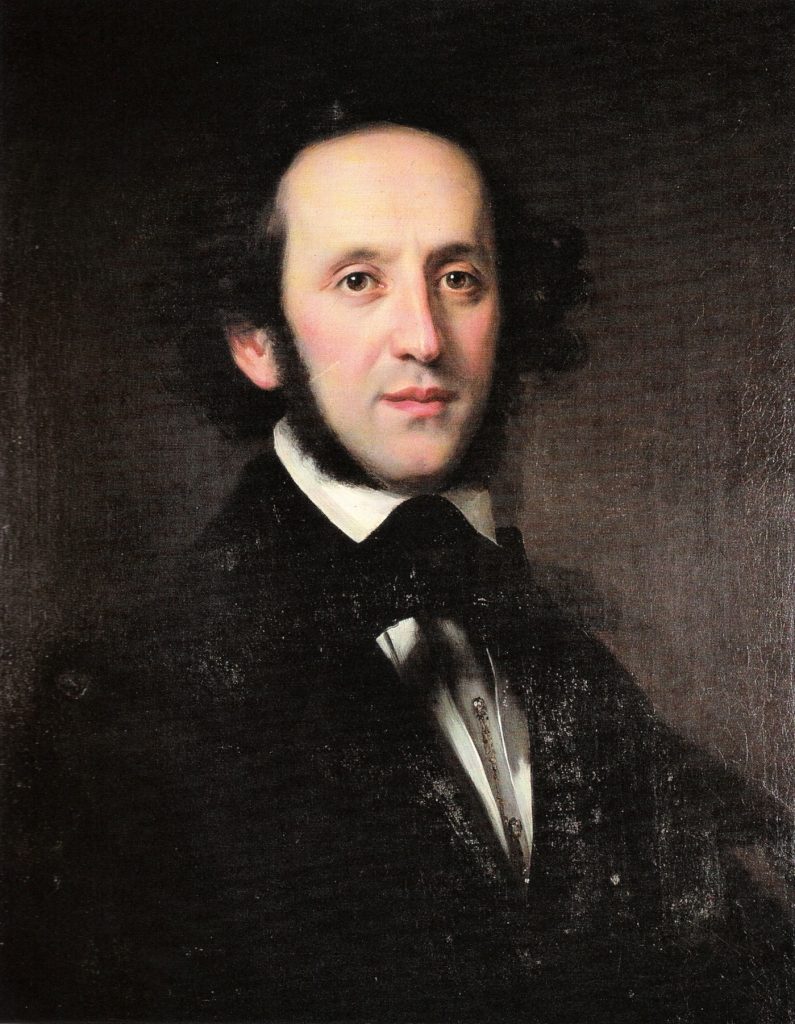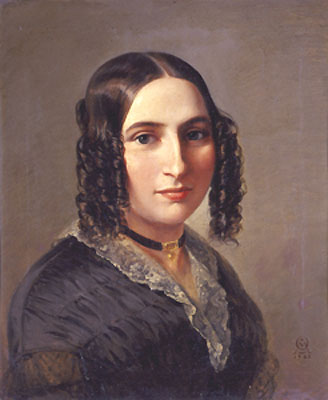Chapter 17: Chamber Music
Introduction
By Jennifer Bill
In the rich tapestry of musical history, the 19th century stands as a period of remarkable artistic transformation and innovation. Amidst the sweeping changes brought about by social, political, and technological developments, chamber music emerged as a captivating and intimate form of musical expression. Nestled between the grandeur of orchestral compositions and the solo virtuosity of instrumental concertos, chamber music offered a unique platform for composers and performers to craft intricate, nuanced works meant for a more intimate setting.
The term “chamber music” itself evokes a sense of intimacy and refinement, reflecting the music’s original purpose – to be performed in private chambers or salons, often in the homes of aristocrats or well-to-do individuals. This setting encouraged a close connection between performers and their audiences, fostering a sense of shared emotion and artistic dialogue. The 19th century witnessed a flourishing of chamber music compositions, ranging from duos to larger ensembles, encompassing strings, wind instruments, and piano. Composers of this era found in chamber music an avenue for experimentation, allowing them to explore intricate counterpoint, thematic development, and emotional depth in ways that larger orchestral works often couldn’t.
As the century progressed, chamber music became a canvas for the exploration of both traditional forms and bold innovations. The Classical structures of sonata-allegro, ternary, and rondo forms were infused with Romantic ideals, giving rise to more emotionally charged and dynamically diverse compositions. Composers such as Ludwig van Beethoven, Johannes Brahms, Franz Schubert, and Felix Mendelssohn embraced chamber music as a means to express their personal and artistic journeys. Beethoven, in particular, stands as a towering figure in the evolution of chamber music, with his late string quartets transcending mere entertainment to become profound meditations on the human experience.
Beethoven: string quartet no. 15
The societal shifts of the 19th century, including the rise of the middle class and advancements in instrument craftsmanship, contributed to the increased popularity of chamber music. As public concert halls became more prevalent, chamber music found a new platform for dissemination, reaching wider audiences while still preserving its inherent intimacy. The rise of nationalism also left its mark on chamber music, as composers drew inspiration from their own cultural heritages, infusing their compositions with folk melodies and nationalistic fervor.
In the 19th century chamber thrived as a testament to the transformative power of music. Its delicate interplay of instruments, its emotional depth, and its fusion of Classical forms with Romantic expression make it a treasure trove for those seeking to understand the nuanced evolution of musical composition during this captivating era.
Historical Anthology of Music by Women
Louise Farrenc (1804-1875)
By BEA FRIEDLAND
Louise Dumont Farrenc was an unusual figure in the musical life of France during the nineteenth century: an accomplished pianist, composer of distinction, professor at the Conservatoire, and editor of early music. The quality and diversity of this achievement are best understood and evaluated when viewed not as an isolated phenomena but in relation to the milieu in which she lived and worked.

In many important ways, Farrenc functioned outside the cultural mainstream of mid-century Paris, her native city and lifelong home. It was the age of the virtuoso, with superficial display pieces providing the main concert fare,- she preferred to investigate and perform the little-known late sonatas of Beethoven. La vie mondaine revolved around the Opéra; her own predilection was for the instrumental genres. French musical aesthetics traditionally focused on the pictorial aspects of music; her creative bent favored the abstract forms of the sonata and the symphony. French women of musical ability typically sought fame and fortune on the opera stage or as composers of sentimental romances; Louise Farrenc quietly pursued her career as an effective teacher, composer of (mainly) chamber music, and—in the end—as a performer, editor, and champion of the largely unexplored harpsichord repertoire.
A descendant of a long line of royal artists (including several women painters) and a sister of the laureate sculptor Auguste Dumont, Louise showed artistic and musical talent of a high order at an early age. By mid-adolescence, she had developed into a pianist of professional calibre as well as an exceptional theory student and a promising composer. Her studies in composition and orchestration with Anton Reicha were interrupted for a few years following her marriage in 1821 to Aristide Farrenc, a flutist and music publisher. With the resumption of work with Reicha in the mid-1820s, Louise Farrenc began to publish her compositions for piano, most notable of which is the Air russe varié, Opus 17 (1835), which was favorably reviewed by Schumann in Neue Zeitschrift für Musik a year after publication, and the Thirty Etudes in all the major and minor keys (1839 or 1840).
Farrenc’s orchestral works comprise two overtures (1834) and three symphonies (completed in the 1840s). None are published, although each had more than one Paris performance, and some were heard in other major European capitals as well. Her outstanding contribution is the body of chamber music she produced between 1840 and 1860: two quintets, four trios, two violin sonatas, a cello sonata, and two unpublished pieces—a sextet and a nonet. All these works were performed many times over, and most of them were published within a few years of completion. The Institut de France twice honored Louise Farrenc for her chamber music compositions, awarding her the Prix Chartier in 1861 and 1869.
In 1842 Auber, the director of the Conservatoire, appointed Farrenc professor of piano, a post she retained until her retirement in 1873. The only woman musician at the Conservatoire in the nineteenth century to hold a permanent chair of this rank and importance, she distinguished herself by the excellence of her teaching, which has been demonstrated by the high proportion of her pupils who won competitions and went on to professional careers.
Perhaps most memorable among Louise Farrenc’s musical achievements is her contribution to the 23-volume collection of early keyboard music, Le trésor des pianistes (1861-75). Sharing her husband’s ideal of reviving the harpsichord and virginal repertory of the seventeenth and eighteenth centuries, Louise Farrenc collaborated with him (and continued alone, after his death in 1865) in preparing modern editions of old manuscripts and prints collected from France, England, Italy, and Germany. Supplementing her work as editor and publisher, she brought the music alive in a series of séances historiques, in which she and her pupils performed selections from Le trésor des pianistes. Her own compositions continued to be heard in Paris up to the time of her death in 1875—the last performance during her lifetime, appropriately enough, being the Adagio cantabile of her Third Symphony conducted by Edouard Colonne at the Concert du Chatelet, February 14, 1875.
The Trio, Opus 45, composed in 1857 and published in 1862, is the last of Louise Farrenc’s compositions for three instruments. Scored for flute (or violin), cello, and piano, it is an engaging, carefully constructed piece reminiscent of Mendelssohn’s Classical form and Romantic aura.
Trio
Music of the Mendelssohns
Felix Mendelssohn-Bartholdy (1809-1847)
In terms of musical craft, few nineteenth-century composers were more accomplished than Felix Mendelssohn-Bartholdy. Growing up in an artistically rich, upper-middle-class household in Berlin, Germany, Felix Mendelssohn received a fine private education in the arts and sciences and proved himself to be precociously talented from a very young age. He would go on to write chamber music for piano and strings, art songs, church music, four symphonies, and oratorios as well as conduct many of Beethoven’s works as principal director of the Leipzig Gewandhaus Orchestra. All of his music emulates the motivic and organic styles of Beethoven’s compositions, from his chamber music to his more monumental compositions. Felix was also well-versed in the musical styles of Mozart, Handel, and Bach.

Felix descended from a family of prominent Jewish intellectuals; his grandfather Moses Mendelssohn was one of the leaders of the eighteenth-century German Enlightenment. His parents, however, seeking to break from this religious tradition, had their children baptized as Reformed Christians in 1816. Anti-Semitism was a fact of life in nineteenth-century Germany, and such a baptism opened some, if not all, doors for the family. Most agree that in 1832, the failure of Felix’s application for the position as head of the Berlin Singakadmie was partly due to his Jewish ethnicity. This failure was a blow to the young musician, who had performed frequently with this civic choral society, most importantly in 1829, when he had led a revival of the St. Matthew Passion by Johann Sebastian Bach. Although today we think of Bach as a pivotal figure of the Baroque period, his music went through a period of neglect until this revival.
Initially, Felix’s father was reluctant to see his son become a professional musician; like many upper-middle-class businessmen, he would have preferred his son enjoy music as an amateur. Felix, however, was both determined and talented, and eventually secured employment as a choral and orchestral conductor, first in Düsseldorf, and then in Leipzig, Germany, where he lived from 1835 until his death. In Leipzig, Felix conducted the orchestra and founded the town’s first music conservatory.
Felix’s music was steeped in the styles of his predecessors. Although he remained on good terms with more experimental composers of his day, including Hector Berlioz and Franz Liszt, he was not fond of their music. It is not surprising, then, that he composed in genres passed down to him, including the symphony, string quartet, and oratorio.
String quartet in F minor
Historical Anthology of Music by Women
Edited by James R. Briscoe
Fanny Mendelssohn Hensel (1805-1847)
By MARCIA J. CITRON
Fanny Hensel was a prolific composer, a skilled pianist, and a respected leader of a flourishing Berlin salon. The elder sister of Felix Mendelssohn, Hensel grew up in a culturally sophisticated home, where from an early age she was exposed to the leading artistic and intellectual figures of the day. These formative contacts helped instill in her a keen discriminating mind and a knowledge and love of poetry. Heinrich Heine, the author of the text of Hensel’s song “Schwanenlied,” was a frequent visitor to the Mendelssohn household, and Fanny may have heard some of his poems even before they were published.

Fanny and Felix shared a common music education and developed an unusually close sibling relationship. But largely because of her sex, Fanny was not encouraged to become a professional musician. Nonetheless, a prolific outpouring of pieces continued unabated throughout her life. Her husband, the Prussian court painter Wilhelm Hensel, was very supportive; and her brother, on whose good opinion she strongly depended, encouraged her composing but was opposed to her pieces being published. Largely because of Felix’s negative attitude, only a very small percentage of her compositions—which number well over 400—were published.
Hensel composed almost exclusively in the genres long associated with women and their domestic environment: lieder and piano pieces. Many of these pieces, as well as her few forays into orchestral and choral works, were presented at her lively Sunday musical gatherings, or Sonntagsmusiken. Hensel herself was a leading participant, playing the piano as a soloist or as part of the ensemble. Except for a large charity concert in 1838, Hensel did not perform in public, in accordance with her family’s attitudes about women’s proper roles. Thus her celebrated private gatherings provided her with a needed forum for her various musical activities.
Trio in D minor, op. 11
Hensel’s first published compositions, three lieder, appeared under her brother’s authorship in his Opus 8 (1827); three more followed in his Opus 9 (1830). Unfortunately, we do not know the reason for this camouflage, although it was not an uncommon practice among women composers. The first piece issued under Hensel’s own name was a lied in an anthology that appeared in 1837. With the exception of an isolated lied published two years later, it was not until the last year of Hensel’s life that her pieces reached the public in printed form, and this time in a spate of seven publications rather than as isolated works. “Schwanenlied” is the first song in Opus 1, Sechs Lieder für eine Stimme mit Begleitung des Pianoforte (Six Songs for One Voice with Piano Accompaniment). The collection appeared in the summer of 1846 and provided Hensel with the great satisfaction of finally seeing an entire volume published under her own name. She died of a stroke in 1847, aged 41.
Schwanenlied
Licensing & Attributions
Edited by James R. Briscoe. INDIANA UNIVERSITY PRESS. This work is licensed under a Creative Commons Attribution-NonCommercial-NoDerivatives 4.0 International License.
“Nineteenth-Century Music and Romanticism” from Understanding Music Past and Present by Jeff Kluball and Elizabeth Kramer.
Understanding Music: Past and Present is licensed under a Creative Commons Attribution-ShareAlike 4.0 International License.
Edited and additional material by Jennifer Bill
Media Attributions
- Louise Farrenc © Luigi Rubio via. Wikipedia is licensed under a Public Domain license
- Felix Mendelssohn Bartholdy
- Fanny Hensel © Wikipedia is licensed under a Public Domain license

